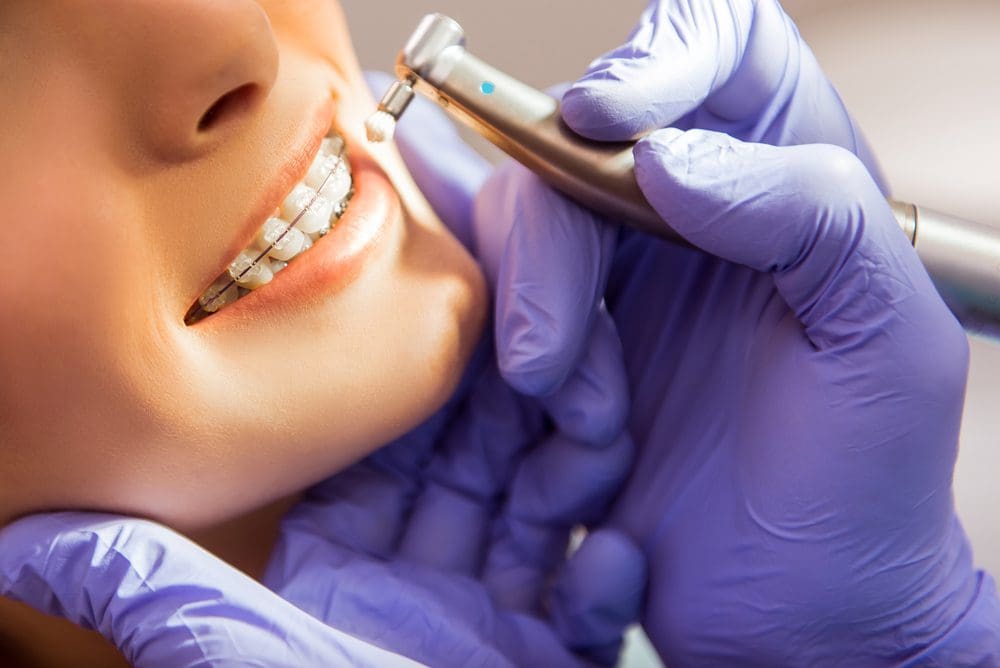Comprehensive Guide to Orthodontics Treatments for Dealing With Dental Misalignments
Comprehending the ins and outs of each procedure, including their systems, benefits, and possible downsides, is critical in making educated decisions about one's orthodontic therapy. As we browse with the detailed guide to orthodontic treatments for remedying dental misalignments, the intricate information of each technique will unfold, losing light on the course toward a useful and harmonious oral placement.
Orthodontic Procedures Review

Normal modifications and tracking are critical components of orthodontic treatment to make sure development is on track and to make any kind of essential alterations along the means. By undertaking orthodontic procedures, patients can not only attain a straighter grin yet additionally improve their general dental health and function.
Standard Dental Braces: How They Work
When thinking about orthodontic therapies for dental misalignments, standard braces stand apart as a time-tested approach for dealing with teeth positioning. Conventional dental braces are composed of brackets, cords, and bands that function together to apply continual pressure on the teeth, gradually relocating them right into the preferred placement. The brackets are affixed to the teeth making use of a special adhesive, and the cables are threaded through the brackets. By readjusting the tension of the cords, orthodontists can manage the direction and pressure applied to each tooth, assisting them into correct alignment gradually.
One secret aspect of how traditional braces job is the procedure of bone improvement. As pressure is applied to the teeth via the braces, the bone bordering the teeth is improved to support the brand-new tooth placements. This renovation is essential for the lasting security of the dealt with positioning. Patients will require normal changes at the orthodontist's office to guarantee the braces remain to use the proper stress for reliable teeth activity.
Unnoticeable Aligners: Advantages And Disadvantages
Invisible aligners supply a very discreet and hassle-free alternative to conventional dental braces for correcting oral imbalances. These clear, personalized trays are basically invisible when worn, making them an attractive option for individuals seeking a more cosmetically pleasing orthodontic treatment. One of the main advantages of invisible aligners is their removability, permitting less complicated maintenance of dental hygiene compared to conventional dental braces. Individuals can eliminate the aligners prior to consuming or brushing their teeth, minimizing the danger of food obtaining embeded the home appliance and simplifying the cleansing you can find out more procedure.

Surgical Orthodontic Options
Surgical treatments in orthodontics existing sensible alternatives for resolving complex dental imbalances that might not be efficiently settled with standard orthodontic therapies. While conventional braces and invisible aligners can correct lots of orthodontic issues, particular situations require surgical intervention to achieve ideal outcomes. Surgical orthodontic alternatives are normally advised for serious malocclusions, considerable jaw discrepancies, and instances where the underlying bone structure needs adjustment to accomplish appropriate placement.
One typical medical orthodontic treatment is orthognathic surgery, which includes rearranging the jaws to correct functional problems such as difficulty talking or chewing. This surgical procedure is commonly done in cooperation with an orthodontist that assists align the teeth prior to and after the procedure. Surgical orthodontics might additionally include procedures to expose influenced teeth, get rid of excess periodontal tissue, or improve the jawbone to develop a more harmonious facial account.
Before taking into consideration surgical orthodontic options, individuals undergo a comprehensive analysis to identify the need and prospective advantages of such treatments. cumming aligners. While surgery may seem daunting, it can significantly improve both the function and aesthetic appeals of the smile in instances where conventional orthodontic treatments fall short
Retainers and Post-Treatment Treatment

Failing to comply with post-treatment care guidelines can result in regression, where the teeth progressively move back in the direction of their initial positions. Constant retainer wear, good oral hygiene, and regular dental check-ups are essential for maintaining the outcomes achieved through orthodontic surgical procedure and guaranteeing the lasting security of the remedied oral placement.
Final Thought
In conclusion, orthodontic treatments use different choices for dealing with oral imbalances. Surgical orthodontic choices are readily available for much more severe imbalances. In general, orthodontic treatments can efficiently enhance dental health and visual look.
As click to read more we browse via the detailed overview to orthodontic treatments for dealing with oral imbalances, the elaborate details of each technique will unravel, shedding light on the path towards a unified and functional dental positioning. - orthodontist
One of the most usual orthodontic therapies is the usage of braces, which are composed of steel braces and wires that use mild stress to slowly change teeth right into the wanted position.When considering orthodontic treatments for dental misalignments, conventional braces stand out as a tried and true approach for dealing with teeth placing. In addition, invisible aligners might not be ideal for intricate orthodontic concerns that call for more considerable teeth motion, as they are commonly advised for light to modest situations. Retainers are tailor-made orthodontic gadgets developed to hold teeth in their fixed settings after the completion of orthodontic treatment.